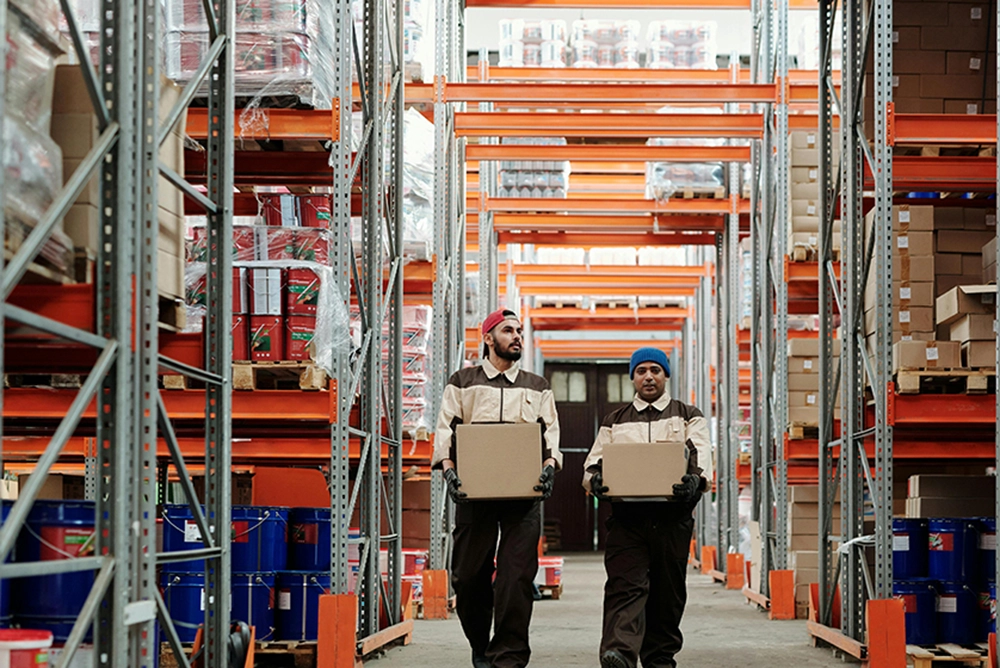Understanding the Impact of Tariffs on Warehousing
Tariffs are taxes or duties imposed by a government on imported goods. Tariffs are a tool for supporting domestic industries and protecting national interests and nearly every country utilizes them.
Tariffs affect the whole supply chain but have a noticeable effect on the warehousing industry. Tariffs on imported goods raise costs for warehouses. Steel tariffs increase prices for equipment and racking. Inventory-specific tariffs also raise storage and turnover expenses.
Inventory Dynamics
Tariffs also have an effect on inventory dynamics. To avoid tariffs businesses may overstock or shift inventory flows, increasing storage requirements and complicating capacity planning. An increased demand for inventory storage can mean an increase in demand for warehouse space and for warehouse temp staffing.
Strategic Facility Changes
As tariffs rise, companies are turning to bonded or Foreign Trade Zones (FTZ). This helps them delay import duties and protect their cash flow. These facilities can be up to four times more expensive but offer financial flexibility.
Uneven Demand Effects
Higher costs may slow consumer demand which resulted in slower inventory velocity in warehouses. This could potentially add to holding costs as businesses try to overstock or shift inventory flows.
Challenges of Warehouse Tariffs
The challenges that tariffs pose for warehouses includes equipment and automation delays, supply chain disruptions, and increased costs.
Equipment and Automation Delays
Tariff related uncertainty may delay automation rollouts due to volatile ROI projections. Delays in equipment or materials from tariffs can cause problems for warehouses. They need these materials for shelving and equipment.
Supply Chain Disruptions
Tariffs force rerouting and new sourcing strategies. (e.g., shifting to southeast Asia or Mexico) This stretches lead times and operational flexibility.
Sourcing inventory from new locations means new travel routes that require changes to processes. This can all take time.
Increased Costs
The greatest challenge is built up of all the other challenges. Increased cost due to tariffs is a challenge warehouses are facing everywhere.
Tariffs are causing uncertainty in demand. This makes it hard for warehouses to know how much inventory to keep. They also struggle with how to store it and how to staff warehouse shifts.
Opportunities of Warehouse Tariffs
Tariffs are not all bad, there are some opportunities for warehouses as well. These include new storage strategies, supplier diversification and operational optimization.
Storage Strategies
FTZs and bonded warehouses offer temporary reprieve from duties, allow repacking or resale before duties hit. Warehouses can also consider opening their doors to new opportunities.
Supplier Diversification
With uncertain demand warehouses are feeling the crunch of the tariffs. But diversification of suppliers can help alleviate the pressure and set warehouses up better for the long run. With diversification of clients warehouses can have more reliable and multiple sources of income.
Operational Optimization
When things are tight, optimization becomes more valuable. With improved forecasting and layout optimization, warehouses can better navigate uneven throughput and variable inventory loads.
Optimizing warehouse workforce can also be an opportunity for warehouses to become more successful. Using flexible temporary warehouse workers to staff a workforce helps warehouses be able to scale their workforce up or down on a shift by shift basis.
Practical Tips for Warehouses to Navigate Tariff Changes
Use Foreign Trade Zones (FTZs) or Bonded Warehousing
Store imports duty-free until they’re released for domestic sale. This defers costs and improves cash flow.
Diversify Your Supply Chain
Source from multiple countries to avoid over-dependence on tariff-sensitive regions and to stabilize inventory flows. Warehouses and 3PLs can open the doors to multiple or more clients.
Optimize Warehouse Layouts and Inventory Flow
Rearrange for flexible storage and picking areas. Use modular shelves and a mix of inventory to handle busy and slow times.
Lean Operations: Forecasting and Inventory Management
Combine data-driven demand forecasting with prudent inventory holding to avoid overstocking while maintaining service level commitments. Robust WMS can help warehouses accurately forecast demand and manage inventory.
Leverage Flexible Staffing Solutions
When demand spikes unpredictably due to tariff-induced restocking, quickly scale staffing using online platforms. Staffing apps or warehouse job apps like Bacon provide instant access to reliable temp labor without long term commitment.
With staffing apps warehouses can find warehouse staff and temp workers can pick up warehouse shifts that fit their schedule
Staffing apps give warehouses a tool to find warehouse workers to scale up or down to meet real time demand. Bacon is more flexible and cost effective than temp agencies near you.
Conclusion
Tariff fluctuations challenge traditional warehouse operations, from rising costs to unpredictable inventory pressures. However, through strategic approaches like utilizing FTZs, diversifying sourcing, optimizing logistics flows, and leveraging flexible staffing, warehouses can maintain resilience and efficiency.
Using staffing platforms like Bacon can help warehouses and 3PLs find pickers packers, and other warehouse workers. This builds flexibility in the workforce without exceeding the budget.







